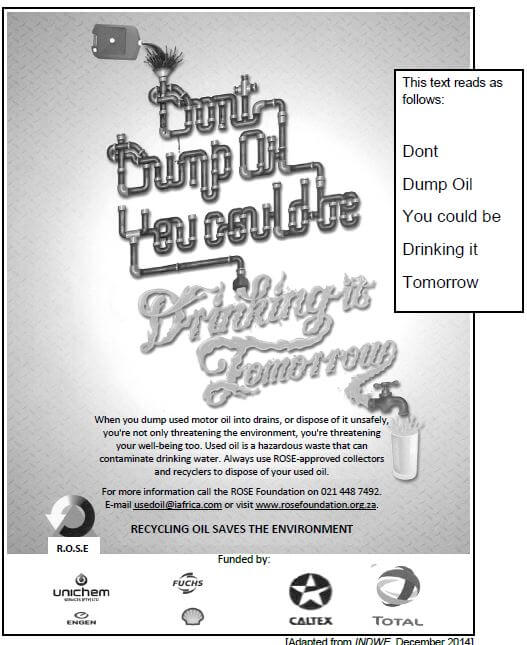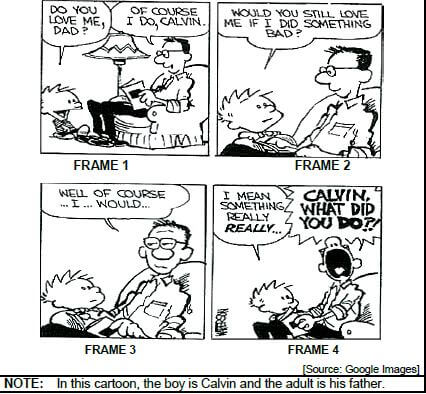ENGLISH PAPER 1 GRADE 12 QUESTIONS - AMENDED SENIOR CERTIFICATE EXAM PAST PAPERS AND MEMOS 2016
Share via Whatsapp Join our WhatsApp Group Join our Telegram GroupEnglish Paper One (P1)
Grade 12
Amended Senior Certificate Exam
Past Papers And Memos 2016
INSTRUCTIONS AND INFORMATION
- This question paper consists of THREE sections:
SECTION A: Comprehension (30)
SECTION B: Summary (10)
SECTION C: Language (40) - Answer ALL the questions.
- Read ALL the instructions carefully.
- Start EACH section on a NEW page.
- Leave a line between answers.
- Number the answers correctly according to the numbering system used in this question paper.
- For multiple-choice questions, write only the question number and the letter (A–D) of the correct answer.
- Pay special attention to spelling and sentence construction.
- Use the following time frames as a guideline:
SECTION A: 50 minutes
SECTION B: 30 minutes
SECTION C: 40 minutes - Write neatly and legibly.
QUESTIONS
SECTION A: COMPREHENSION
QUESTION 1
Read BOTH TEXT A and TEXT B and answer the set questions.
TEXT A
HURRY UP AND 'BE'
|
NOTE:
- Answer ALL the questions in your OWN WORDS.
- For one-word answers, write only the question number and the word. • For multiple-choice questions, write only the question number and the letter (A–D) of the correct answer.
1.1 How do South African youngsters feel about the future? (2)
1.2 Explain what the writer means when he refers to teenagers' way of life as 'continuously connected' (lines 3–4). (2)
1.3 Refer to paragraph 2.
Why is it surprising that cellphones and clothes have dropped out of the top three in the Sunday Times Generation Next Youth Brand Survey of 2015? (2)
1.4 Choose the correct answer to complete the following sentence.
In the Sunday Times Generation Next Youth Brand Survey of 2015, music was ranked ...
- first.
- second.
- third.
- fourth. (1)
1.5 Quote THREE pressures that the youth experience, according to Janet Davel. (3)
1.6 What does it mean to multitask (line 12)? (1)
1.7 How do parents who spend too much time working set a poor example for their children? State THREE ways. (3)
1.8 Anastasia Savopoulos says that more emphasis is placed on electronic relationships than on real ones. What does she mean by this? (2)
1.9 Discuss how the fear of missing out (paragraph 8) may become a negative factor in today's technological world. (2)
1.10 Why do today's school-going youth face much higher workloads than the previous generations? (2)
1.11 Find a word from the passage that means the same as 'adolescents' (line 52). (1)
1.12 Explain Janet Davel's intention or goal in the concluding paragraph. (3)
TEXT B 
1.13 What is the SECOND least popular mode of transport used by South Africans? Give a reason for your answer. (2) [Source: Mail & Guardian, 17–23 July 2015]
1.14 How do the graphics show that the taxi is the most popular mode of transport? (2)
1.15 The artist used a bar graph to show how South Africans travel. Discuss the effectiveness of conveying information in this way. (2)
TOTAL SECTION A: 30
SECTION B: SUMMARY
QUESTION 2
You have been asked to write an article on what parents can do to encourage children to read. The article will be placed in an educational newspaper.
Read TEXT C below and list SEVEN points that you will include in your article on how to encourage children to read.
INSTRUCTIONS
- Your summary must be written in point form.
- List your SEVEN points in full sentences, using no more than 70 words.
- Number your sentences from 1 to 7.
- Write only ONE point per sentence.
- Use your OWN words as far as possible.
- Indicate the total number of words you have used in brackets at the end of your summary.
TEXT C
ENCOURAGING CHILDREN TO READ Teaching children to love reading involves a lot more than simply handing them a book. |
TOTAL SECTION B: 10
SECTION C: LANGUAGE
QUESTION 3: ANALYSING AN ADVERTISEMENT
Study the advertisement (TEXT D) below and answer the set questions.
TEXT D 
3.1 Whose attention does the advertiser hope to attract in this advertisement? (1)
3.2 Refer only to the visual aspects of TEXT D.
Discuss ONE advertising technique that is used to capture the reader's attention. (2)
3.3 Refer to the body copy of the advertisement.
Discuss whether the use of the word 'hazardous' is effective in the advertisement. (2)
3.4 The advertisement is for the R.O.S.E. Foundation, whose logo appears on the left side.
Choose the correct answer to complete the following sentence:
R.O.S.E. is an example of a …
- homonym.
- acronym.
- synonym.
- pseudonym. (1)
3.5 Which TWO clues in the contact details prove that the R.O.S.E. Foundation operates in South Africa? (2)
3.6 The contraction 'Dont' in the text is incorrect.
Rewrite the word, inserting an apostrophe in the correct place. (1)
3.7 Give the singular form of the underlined word in the following sentence. Write down only the correct word.
There are many oil companies that support the responsible disposal of oil. (1)
[10]
QUESTION 4: ANALYSING A CARTOON
Read the cartoon (TEXT E) below and answer the set questions.
TEXT E
Calvin and Hobbes by Bill Watterson 
4.1 Refer to FRAME 1.
Where does the conversation between Calvin and his father take place? Give a reason for your answer. (2)
4.2 Give a reason why Calvin moves closer to his father in FRAMES 2 and 3. (1)
4.3 Ellipsis (…) is used differently in FRAMES 3 and 4.
Explain these TWO different uses of ellipsis. (2)
4.4 Refer to FRAME 4.
4.4.1 Which verbal and visual clues does the cartoonist use to show that Calvin's father is upset? (3)
4.4.2 Discuss whether Calvin's father is justified in being upset. (2)
[10]
QUESTION 5: LANGUAGE AND EDITING SKILLS
5.1 Read the passage (TEXT F) below, which has some deliberate errors, and answer the set questions.
TEXT F
AN OLD LAND ROVER SCORES A MAKEOVER In a case of mistaken identity, an old Land Rover recieves its first ever professional makeover from a dreamy mechanic. Elsa Jansen explains how it happened.
|
5.1.1 Correct the SINGLE error in each of the following sentences. Write down ONLY the question numbers and the words you have corrected.
- In a case of mistaken identity, an old Land Rover recieved its first ever professional makeover from a dreamy mechanic. (1)
- A farmers workhorse is a wonderful vehicle. (1)
- When a vehicle on his farm gives him problems, he phones the professionals and lets they worry about it. (1)
- The following week the mechanic arrived by our farm and began repairing our old Land Rover. (1)
5.1.2 Name TWO punctuation marks that can be used to replace the commas in the following sentence:
Our neighbour Pieter, a pharmacist, does not waste time with engines. (2)
5.1.3 Identify the parts of speech of the underlined words.
She is often driven in harsh conditions. (2)
5.1.4 Rewrite the following sentence in the active voice:
The Land Rover was given her first professional makeover by the mechanic. (1)
5.1.5 Change the following sentence into reported speech:
Pieter told the mechanic, 'I was looking for you the whole day.'
Start with:
Pieter told the mechanic that ... (4)
5.1.6 Choose the correct answer to complete the following sentence:
The figure of speech used to describe the writer's Land Rover in the first nine lines of the passage is …
- a metaphor.
- a simile.
- assonance.
- personification. (1)
5.2 Study the text (TEXT G) below and answer the set questions.
TEXT G 
5.2.1 Rewrite the following sentence in the past tense:
The entire country knows when the Springboks are playing. (2)
5.2.2 Give the antonym of the word 'unites' in the following sentence:
The entire country knows when the Springboks are playing – green and gold is worn proudly and becomes a symbol that unites us on match days. (1)
5.2.3 Study the following sentence and use a homophone for the word 'soar' in a sentence of your own.
Their fans give the Bokke all the support they deserve to soar to new heights. (1)
5.2.4 Rewrite the following sentence and give the correct form of the word in brackets:
Watching the Springboks at the stadium is (good) than watching them on television. (1)
5.2.5 Complete the following tag question.
The Springboks strive to remain the best, ...? (1)
[20]
TOTAL SECTION C: 40
GRAND TOTAL: 80